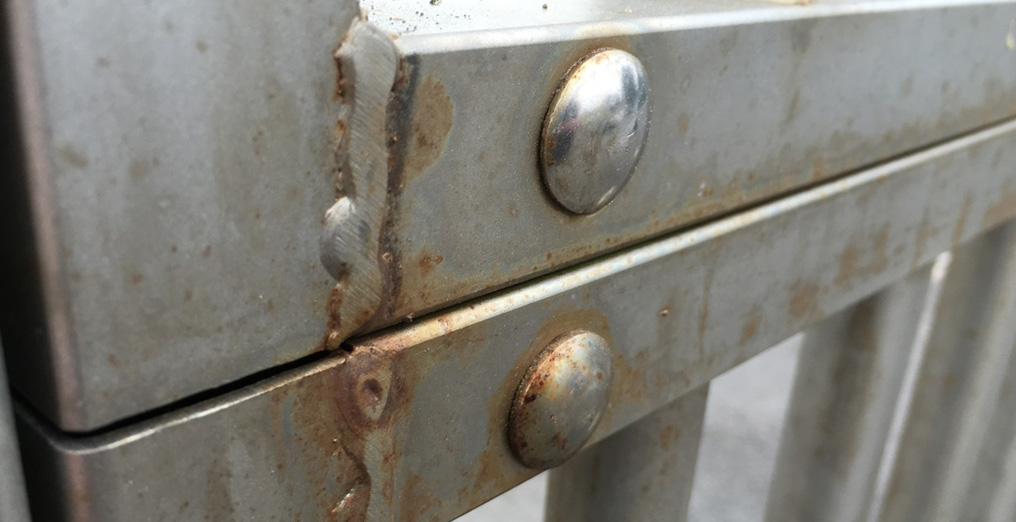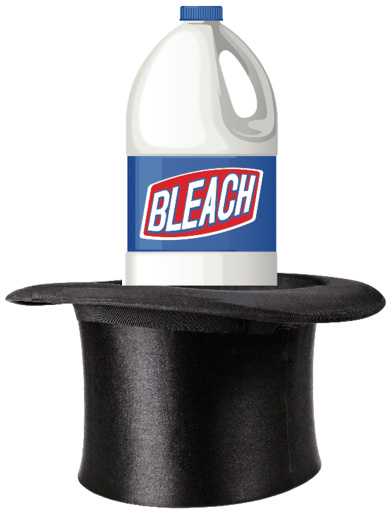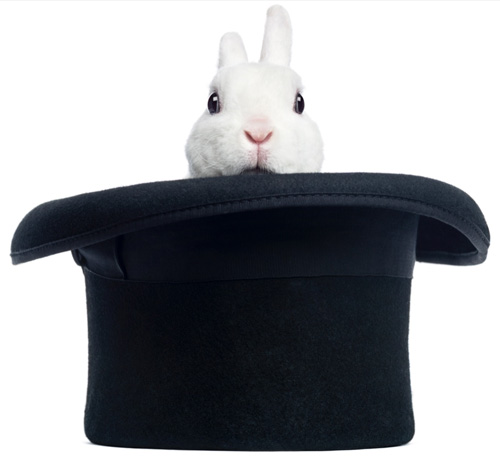
 Bleach as a quick-fix cure, however, is more illusion than solution.
Bleach as a quick-fix cure, however, is more illusion than solution.
According to Wikipedia, chlorine-based bleaches were invented in Europe in the late 18th century. Swedish chemist Carl Wilhelm Scheele discovered chlorine in 1774, and in 1785 French scientist Claude Louis Berthollet recognized that it could be used to bleach fabrics.
200+ years later people still love bleach. It’s often been associated as a “quick-fix” to tough spills or stains. Is someone sick? Bleach the house. Did you just spill red wine on your white shirt? Add bleach to the wash load. Got some mildew and mold growing in the animal hospital? Get some bleach.
From toilet bowls to doggie bowls, bleach is a widely used product amongst those looking for a quick-fix cure to germs, stains and grime. And why wouldn’t it be? It seems to work like magic to make stains and mildew disappear and it likely does wonders for masking germs, at least temporarily.
 Shawn Seitz, D.V.M., founder of Alpha Tech Pet, wholesale and retail provider of animal care products including environmentally-friendly cleaning solutions
Shawn Seitz, D.V.M., founder of Alpha Tech Pet, wholesale and retail provider of animal care products including environmentally-friendly cleaning solutions
On a mission to demystify the magical perception of bleach, Dr. Shawn Seitz, founder of Alpha Tech Pet, is well aware of the many misconceptions that dominate the cleaning culture of today.
“People are misplacing their trust when they believe that bleach is their “everything” solution for dealing with stains and infection control” says Seitz. “In the real world, that’s just not the case. And there are a number of reasons for why this is the case.”
Here are Seitz’s top ten reasons why bleach may not be the best choice for your cleaning needs:
1. Highly Corrosive.
Bleach is highly unstable and, thus, needs to be stabilized with Lye, which, in turn, raises the pH to the level where it becomes a very corrosive chemical that will damage various types of metals, pipes and fixings commonly found within Animal Care Facilities.
2. Short Lifespan.
Bleach is easily inactivated when exposed to light and/or organic matter, and it also degrades quickly with age, significantly shortening its lifespan compared to other chemicals on the market. The Environmental Protection Agency (EPA) even requires bleach products to use special labeling language stating that bleach “degrades with age.”
3. Not Economical.
Because bleach is so unstable and inactivates rapidly, it needs to be discarded every few hours, making it less cost-effective than you may think. And, since most people are not aware of the need to discard bleach every couple of hours, they are using a product with degraded capabilities, giving them a false sense of security in its use.
4. Time Consuming.
If you want to use bleach properly, it’s important to pre-clean surfaces first, before use (because organic debris inactivates bleach) and you must make sure that bleach remains in contact for at least 10 to 30 minutes. Not to mention the fact that bleach loses its content from the moment it is manufactured. In fact, bleach loses 50% of its potency within 60 days of being manufactured, something most people are not aware of. So, by the time you actually purchase bleach, it may have already lost half, or more, of its active ingredients, losing its impact, and thus requiring stronger dilutions than you may think, or longer dwell times.
5. Harmful to Health.
Because bleach is filled with powerful chemicals, it can aggravate the upper respiratory system, tissues, and mucous membranes. And then there is the intense harmful smell: obnoxious odors like bleach contribute to stress in animals, and stress makes them even more susceptible to diseases.
6. Potent Concentration.
Bleach concentrations vary widely, ranging from two to six percent. Therefore, unless you are aware of this, you may be using inadequate solutions on a batch to batch basis.
7. A Disaster Waiting to Happen.
You may have seen recipes that require you to mix a certain solution with bleach, but you really need to be cautious about mixing. If bleach is blended with acids, toxic chlorine gas will be released, resulting in a potential disaster. To be safe and sure, never mix bleach with any other chemicals.
8. Carcinogens. Need we say more?
Bleach combines with organic debris to form carcinogenic by-products and volatile organic compounds (VOCs). The good news is that there is a movement discouraging the use of bleach due to these carcinogenic by-products and volatile organic compounds.
9. Ineffective Ingredients.
There are two forms of chlorine in bleach existing in a pH dependent equilibrium: HOCL and OCL. The more potent of the two is hypochlorous acid (HOCL) which is 120x more potent than OCL as a disinfectant. However, HOCL concentration is limited in solutions with a pH of 9.0 or higher. Because bleach has a pH of 11.5, most of the chlorine will be OCL, which is much less effective than HOCL. This is one reason why bleach isn’t as powerful as you may think. There are other more effective chlorine disinfectants that don’t have this limitation.
10. Nature’s Enemy.
Because bleach is inactivated by all things natural, dirt and organic material prevent bleach from doing the thorough job that you may have hoped for.
A Better, Safer Product
Having been in the animal care industry for 35 years, Dr. Seitz believes that we should be running in the opposite direction of bleach. Seitz’s experience has proven that bleach works under only very limited and controlled circumstances and he is realistic about the fact that there are far better options out there.
“Basically, any routine disinfectant is far better than bleach usage,” says Seitz. “These would include our products like KennelSol, Stericide, Trifectant, PurTabs, Purell Healthcare RTU Surface Disinfectant, Aqueous Ozone (3x more powerful than bleach and 3000 times faster killing microbes), and Wysiwash.. Bleach is good at killing microorganisms but, only under ideal circumstances, which in the real world just isn’t.”

Bleach Is Not the “TADA” That We Thought
Up until now you may have thought that bleach was the magic of cleaners, but it’s important to know there is no rabbit in the hat. Don’t let that strong smell fool you. Bleach is not as powerful as you may think and it’s far more harmful to your health than you may have imagined.
KennelSol® is available both retail and wholesale, shipping directly to you via Alpha Tech Pet.